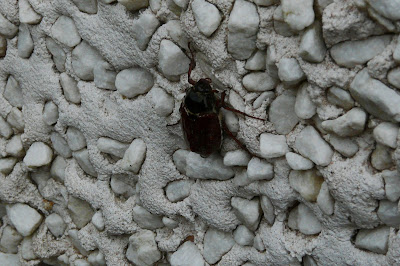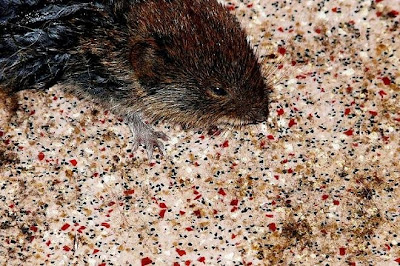Last week, I stopped when I spotted these yellow flowers. It is rare that I do this with cultivated plants and flowers, as I find their wild cousins (or ancestors in some cases) much more interesting. And think of it, they do not receive extra watering whenever rain has been absent for awhile, nor do they get special fertiliser delivered at their roots at times when they need it most. No, they have to fight their own battle. They have to push their roots out, and further out to find any bit of moisture, and they have to push above ground too, where space is at a premium.
Then the real struggle starts when the time arrives to develop flowers, and not just any flower; It will have to be brighter, emit a stronger scent, and create an easy way of transferring the all important pollen onto the carrier. The Fly, Bee, Moth or Butterfly, which shall hopefully deliver its parcel onto the next flower, eagerly awaiting this fresh dose, in order to guarantee the survival of the species.
As I opened this picture on my laptop, I noticed how the petals resemble brush strokes. I am not sure in which medium these are painted; was it oil, acrylics but I love how the yellow brings out the pale tone of the green background.
What is more, it reminded me immediately of Lottemarie, my late aunt, a sister of my father. She was a lovely person, and she had a great talent of not only create wonderful paintings, but also able to teach others. She taught art at the college. Lottemarie was also a great inspiration to Elly, my lovely friend, and mother.
She and her ex-husband Piet, and his wife,started an art gallery between their two houses, 2 miles from where we lived. This was very new at the time, and certainly the first one in our area of small villages and towns in the heart of Holland.
We, two young girls, would come to the opening nights of the exhibitions, 'twirling' around with the sherry, orange juice and wine glasses. Some years later, when Louise, my sister, got the strings of her new guitar under her belt, we would sing popular songs from bands like Creedance Clearwater Revival.
"Project Maarsbergen" was later handed over to the regional art circle to organise it all, when Lottemarie and her 2nd husband, Cees, withdrew more from it all.
Lottemarie used all kind of medium, oil, watercolour and acrylics. Elly who worked mainly in watercolour, travelled a lot because the flat landscape of the The Netherlands did not manage to inspire her at all. no chance of a tree in the middle of a field there. It is all flat and in straight lines. She therefore loved coming to Ireland and she has created a fair amount of Irish watercolours. Most of her acrylics are abstract. She started doing these only later, a little before we left in the eighties.
A typical Lottemarie in either oil or acrylic.

Could have been an Elly, in watercolour.

I think this Daisy would have challenged Lottemarie into picking up her brush, also.

Ox-eye Daisy,

Another thing Elly liked was Lichen, and I can picture her pen drawing of this Pine cone which must have been lying at the edge of the road for a bit, I think. There was Lichen here on everything on the road, 5cm pieces of bark or broken off a branch. It is a road I pass regularly, when I've brought my camera to the shop and take my time when I pass the hedgerow step for step.
hOwever, there is no hedgerow at this particular bit of road, where the 12 new county council are. So I intend to pass a little faster along thios stretch, on my way home.
































